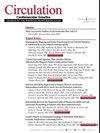Pathogenicity of Hypertrophic Cardiomyopathy Variants: A Path Forward Together.
引用次数: 8
Abstract
The challenges of correctly interpreting rare variants identified via genetic testing of patients with hypertrophic cardiomyopathy (HCM) are universal and ever present. HCM genetic testing has been offered for almost 2 decades, yet in spite of the leaps forward in our understanding, the genetic underpinnings of this disease remain elusive in many patients. Mainstream application of comprehensive cardiac gene panels, which are becoming more affordable as the technology develops, detect a clinically significant variant in 40% to 60% of patients with the majority of variants residing in genes encoding the cardiac sarcomere.1,2 The value of identifying a pathogenic variant in a proband extends to family members, who have the option to know conclusively whether they carry the causative variant, allowing more targeted clinical surveillance and clarifying risk to children. For many others, however, the identification of uncertain variants poses greater challenges, and the expertise, resources, and standardized criteria to classify them as causative or benign currently fall short. See Article by Furqan et al In this issue of Circulation: Cardiovascular Genetics , Furqan et al3 demonstrate the marked discordance seen between specialist HCM centers worldwide. Among sarcomeric human cardiomyopathy registry centers, 20.5% of variants seen in >1 center had classification discrepancies that impacted clinical management, that is, likely pathogenic/pathogenic or variant of uncertain significance or likely benign/benign. The primary reason, in 75% of cases, was access to privately held data by either the sarcomeric human cardiomyopathy registry center (60%) or from the genetic testing laboratory’s internal experience (60%). Segregation information from informative families accounted for 35% of discordant variants, …肥厚性心肌病变异的致病性:共同前进的道路。
本文章由计算机程序翻译,如有差异,请以英文原文为准。
求助全文
约1分钟内获得全文
求助全文
来源期刊

Circulation: Cardiovascular Genetics
CARDIAC & CARDIOVASCULAR SYSTEMS-GENETICS & HEREDITY
自引率
0.00%
发文量
0
审稿时长
6-12 weeks
期刊介绍:
Circulation: Genomic and Precision Medicine considers all types of original research articles, including studies conducted in human subjects, laboratory animals, in vitro, and in silico. Articles may include investigations of: clinical genetics as applied to the diagnosis and management of monogenic or oligogenic cardiovascular disorders; the molecular basis of complex cardiovascular disorders, including genome-wide association studies, exome and genome sequencing-based association studies, coding variant association studies, genetic linkage studies, epigenomics, transcriptomics, proteomics, metabolomics, and metagenomics; integration of electronic health record data or patient-generated data with any of the aforementioned approaches, including phenome-wide association studies, or with environmental or lifestyle factors; pharmacogenomics; regulation of gene expression; gene therapy and therapeutic genomic editing; systems biology approaches to the diagnosis and management of cardiovascular disorders; novel methods to perform any of the aforementioned studies; and novel applications of precision medicine. Above all, we seek studies with relevance to human cardiovascular biology and disease.
 求助内容:
求助内容: 应助结果提醒方式:
应助结果提醒方式:


